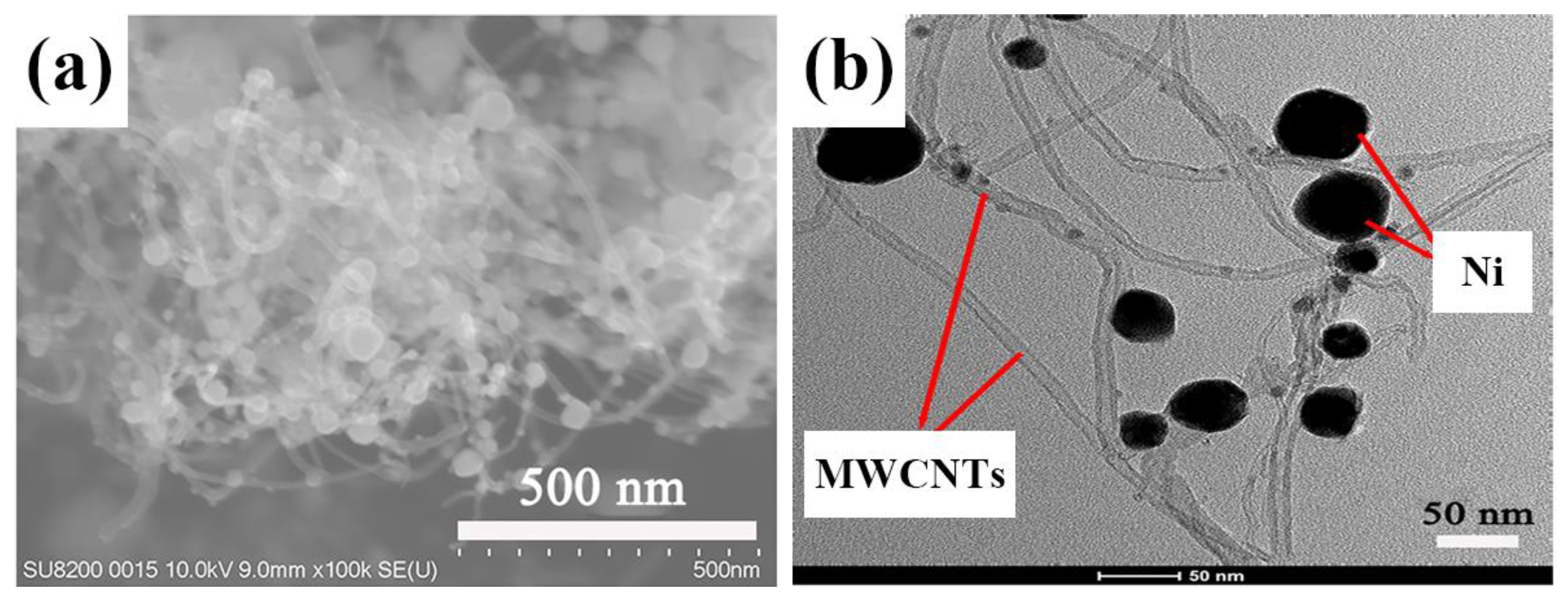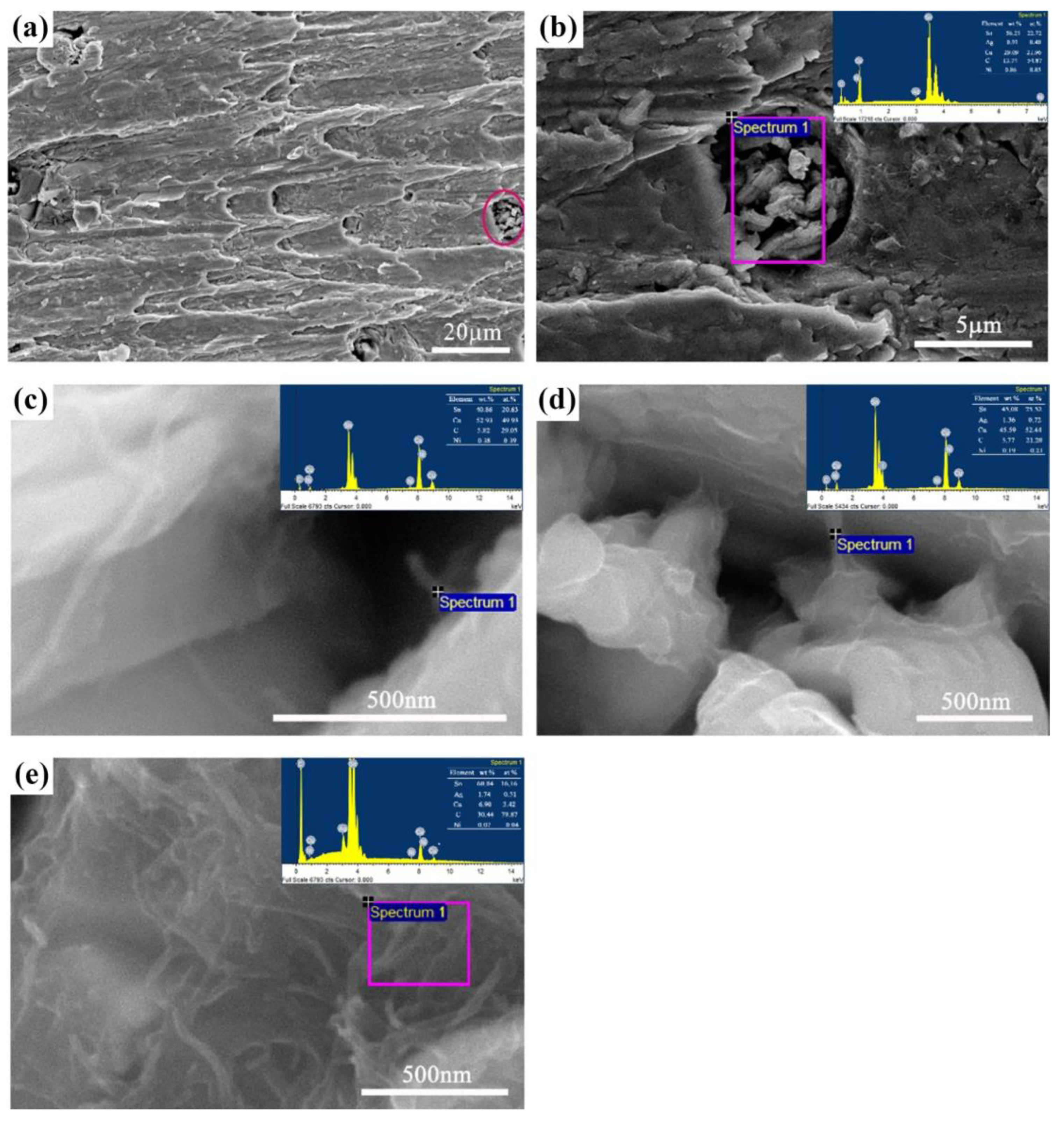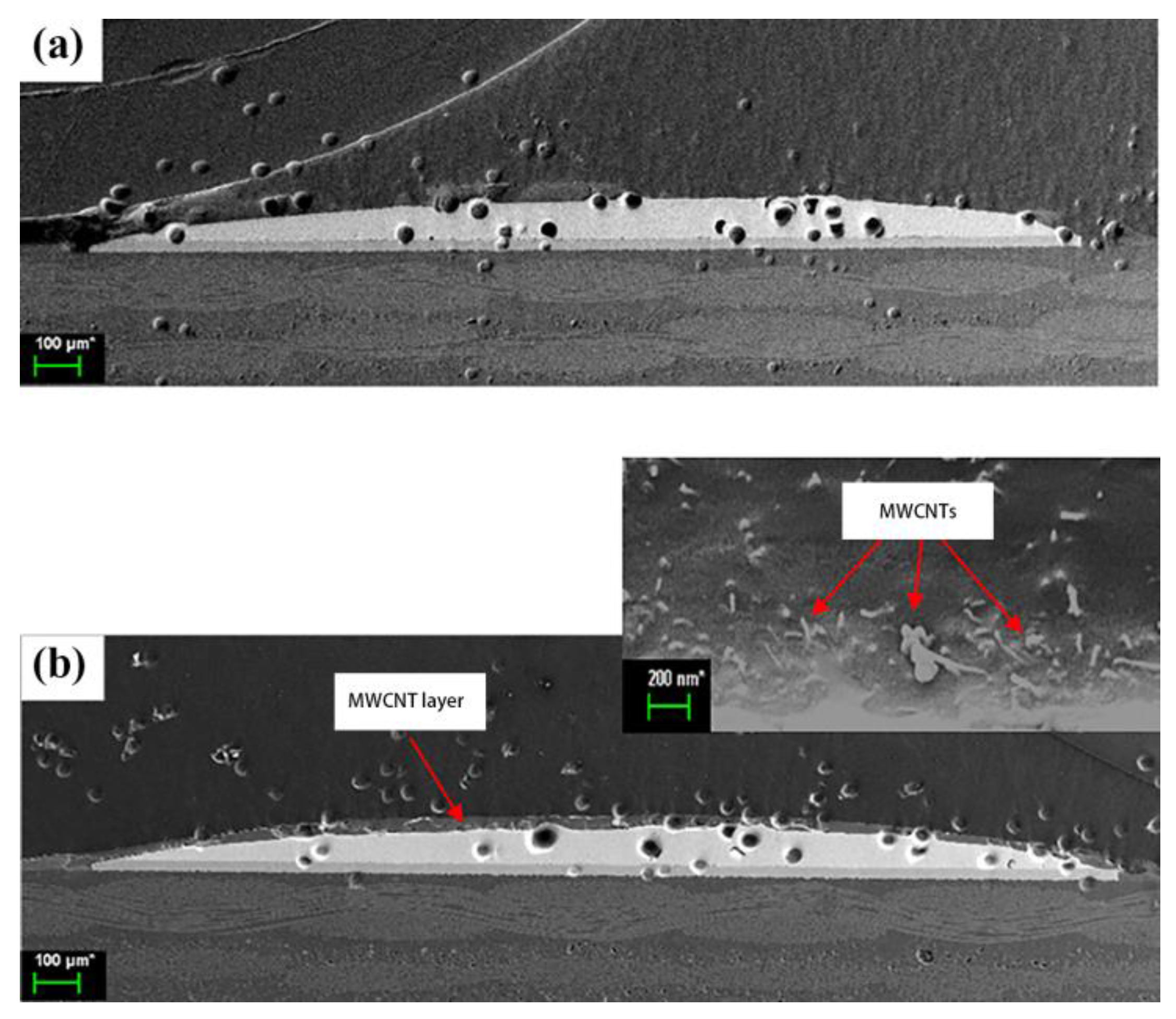
| Version | Summary | Created by | Modification | Content Size | Created at | Operation |
|---|---|---|---|---|---|---|
| 1 | Wenchao Yang | -- | 1260 | 2023-05-25 10:31:09 | | | |
| 2 | Catherine Yang | Meta information modification | 1260 | 2023-05-26 03:18:55 | | |
Video Upload Options
Carbon nanotubes (CNTs) are being applied with increasing frequency for advanced soldering. They have excellent mechanical, electrical, and thermal properties and are primarily used to reinforce lead-free solders. The addition of CNTs can effectively improve the ultimate tensile strength, microhardness, shear strength, and creep resistance of the solder. However, the practical application of CNT composite solders has been a challenge for researchers for decades. The most significant issue is uniform dispersion due to the large density and surface differences between CNTs and solders. Other concerns are the structural integrity of CNTs and their limited addition amount, solder wettability, and interfacial bonding. CNT composite solders can only be widely used in a real sense when these challenges are properly addressed and overcome.
1. Introduction
2. Structure of CNT Composite Solder



3. Strengthening Mechanism of CNT Composite Solder
References
- Javid, N.S.; Sayyadi, R.; Khodabakhshi, F. Lead-free Sn-based/MW-CNTs nanocomposite soldering: Effects of reinforcing content, Ni-coating modification, and isothermal ageing treatment. J. Mater. Sci. Mater. Electron. 2019, 30, 4737–4752.
- Wang, J.; Xue, S.; Zhang, P.; Zhai, P.; Tao, Y. The reliability of lead-free solder joint subjected to special environment: A review. J. Mater. Sci. Mater. Electron. 2019, 30, 9065–9086.
- Li, M.L.; Zhang, L.; Jiang, N.; Zhang, L.; Zhong, S.J. Materials modification of the lead-free solders incorporated with micro/nano-sized particles: A review. Mater. Des. 2021, 197, 109224.
- Xu, K.K.; Zhang, L.; Gao, L.L.; Jiang, N.; Zhang, L.; Zhong, S.J. Review of microstructure and properties of low temperature lead-free solder in electronic packaging. Sci. Technol. Adv. Mater. 2020, 21, 689–711.
- Bharath Krupa Teja, M.; Sharma, A.; Das, S.; Das, K. A review on nanodispersed lead-free solders in electronics: Synthesis, microstructure and intermetallic growth characteristics. J. Mater. Sci. 2022, 57, 8597–8633.
- Zhai, X.; Chen, Y.; Li, Y.; Zou, J.; Shi, M.; Yang, B. Mechanical, photoelectric and thermal reliability of SAC307 solder joints with Ni-decorated MWCNTs for flip-chip LED package component during aging. Solder. Surf. Mount Technol. 2022, 34, 257–265.
- Lee, C.J.; Min, K.D.; Park, H.J.; Jung, S.B. Mechanical properties of Sn-58wt%Bi solder containing Ag-decorated MWCNT with thermal aging tests. J. Alloys Compd. 2020, 820, 153077.
- Mohd Salleh, M.A.A.; Hazizi, M.H.; Al Bakri Abdullah, M.M.; Noriman, N.; Mayapan, R.; Ahmad, Z.A. Research Advances of Composite Solder Material Fabricated via Powder Metallurgy Route. Adv. Mater. 2013, 626, 791–796.
- Zhang, S.; Chen, Q. Fabrication of MWCNT incorporated Sn-Bi composite. Fabrication of MWCNT incorporated Sn-Bi composite. Compos. Part B 2014, 58, 275–278.
- Liu, X.; Lu, G.; Ji, Z.; Wei, F.; Yao, C.; Wang, J. Effect of Ni-Coated Carbon Nanotubes Additions on the Eutectic Sn-0.7 Cu Lead-Free Composite Solder. Metals 2022, 12, 1196.
- Qu, M.; Gao, Z.; Chen, J.; Cui, Y. Effect of Ni-coated carbon nanotubes addition on the wettability, microhardness, and shear strength of Sn-3.0Ag-0.5Cu/Cu lead-free solder joints. J. Mater. Sci. Mater. Electron. 2022, 33, 10866–10879.
- Ismail, N.; Jalar, A.; Afdzaluddin, A.; Bakar, M.A. Electrical resistivity of Sn-3.0 Ag-0.5 Cu solder joint with the incorporation of carbon nanotubes. Nanomater. Nanotechnol. 2021, 11, 1847980421996539.
- Carneiro, Í.; Simões, S. Strengthening Mechanisms in Carbon Nanotubes Reinforced Metal Matrix Composites: A Review. Metals 2021, 11, 1613.
- Hawi, S.; Gharavian, S.; Burda, M.; Goel, S.; Lotfian, S.; Khaleque, T.; Nezhad, H.Y. Development of carbonaceous tin-based solder composite achieving unprecedented joint performance. Emergent Mater. 2021, 4, 1679–1696.
- Baig, Z.; Mamat, O.; Mustapha, M. Recent Progress on the Dispersion and the Strengthening Effect of Carbon Nanotubes and Graphene-Reinforced Metal Nanocomposites: A Review. Crit. Rev. Solid State Mater. Sci. 2018, 43, 1–46.
- Chen, B.; Li, S.; Imai, H.; Jia, L.; Umeda, J.; Takahashi, M.; Kondoh, K. Load transfer strengthening in carbon nanotubes reinforced metal matrix composites via in-situ tensile tests. Compos. Sci. Technol. 2015, 113, 1–8.
- Ismail, N.; Jalar, A.; Yusoff, W.Y.W.; Safee, N.S.; Ismail, A. Effect of shock wave on constant load behaviour of Pb-Free/CNT solder joint. Sains Malays. 2020, 49, 3037–3044.
- Yang, L.; Zhou, W.; Liang, Y.; Cui, W.; Wu, P. Improved microstructure and mechanical properties for Sn58Bi solder alloy by addition of Ni-coated carbon nanotubes. Mater. Sci. Eng. A 2015, 642, 7–15.
- Han, Y.; Nai, S.; Jing, H.; Xu, L.; Tan, C.; Wei, J. Development of a Sn-Ag-Cu solder reinforced with Ni-coated carbon nanotubes. J. Mater. Sci. Mater. Electron. 2011, 22, 315–322.
- Billah, M.M. Carbon Nanotube (CNT) Metallic Composite with Focus on Processing and the Resultant Properties. PhD Thesis, University of Central Florida, Orlando, FL, USA, 2017.
- Zhang, K.; Stocks, G.M.; Zhong, J. Melting and premelting of carbon nanotubes. Nanotechnology 2007, 18, 285703.
- Mao, J.; Yang, W.; Song, Q.; Lv, Y.; Jiang, S.; Li, Y.; Zhan, Y. The effects of the addition of on the hardness, density, wettability and mechanical properties of Sn-0.7Cu lead-free solder. J. Mater. Sci. Mater. Electron. 2021, 32, 10843–10854.
- Nai, S.; Gupta, M.; Wei, J. Development of novel lead-free solder composites using carbon nanotube reinforcements. Int. J. Nanosci. 2005, 4, 423–429.
- Nai, S.; Wei, J.; Gupta, M. Interfacial intermetallic growth and shear strength of lead-free composite solder joints. J. Alloys Compd. 2009, 473, 100–106.
- He, P.; Lu, X.C.; Lin, T.S.; Li, H.X.; An, J.; Ma, X.; Feng, J.C.; Zhang, Y.; Li, Q.; Qian, Y.Y. Improvement of mechanical properties of Sn-58Bi alloy with multi-walled carbon nanotubes. Trans. Nonferrous Met. Soc. China 2012, 22, s692–s696.
- Zhu, Z.; Chan, Y.C.; Chen, Z.; Gan, C.L.; Wu, F. Effect of the size of carbon nanotubes (CNTs) on the microstructure and mechanical strength of CNTs-doped composite Sn0.3Ag0.7Cu-CNTs solder. Mater. Sci. Eng. A 2018, 727, 160–169.
- Khodabakhshi, F.; Zareghomsheh, M.; Khatibi, G. Nanoindentation creep properties of lead-free nanocomposite solders reinforced by modified carbon nanotubes. Mater. Sci. Eng., A 2020, 797, 140203.




